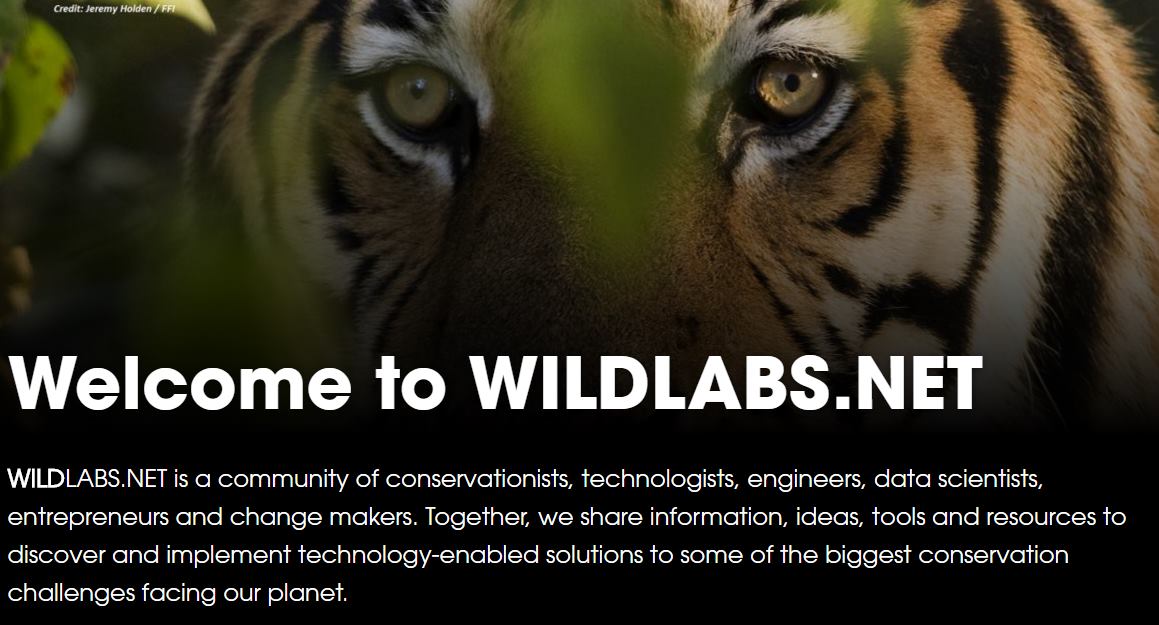United for Wildlife, with support from Google.org and ARM, today launched a conservation technology network to close the information-sharing gap in the fight against illegal wildlife trade and other pressing issues facing our planet. The online network will foster a global community of users to share best practices and to identify technology-based solutions to evolving conservation challenges.
WILDLABS.NET is a new digital portal designed to connect conservationists, technologists, engineers, data scientists, entrepreneurs and thought leaders to support them to find, share and create effective technology-based solutions to protect threatened wildlife and habitats.
The threats to our natural world have never been greater. Populations of mammals, birds, reptiles, amphibians and fish have declined by more than half in the past 40 years. One of the most arduous challenges is stopping the poaching epidemic, with illegal wildlife trade – worth at least $10 billion per year – driving poaching and decimating wildlife populations. Elephants, rhinos, tigers and other animals are being wiped out, while national and regional economies suffer.
The good news is that technology is enabling conservationists to develop new – and to scale up existing – responses to major threats like poaching. However, United for Wildlife partners recognized that the lack of information sharing and direct links between technologists and those working on the front lines of conservation presented a critical barrier to progress. Until now, data and lessons learned from research and development, field tests and implementation of technology tools are often kept within individual organizations.
WILDLABS.NET aims to close the collective information gap.
With a mobile-friendly interface, WILDLABS.NET allows users who range from field-based conservation biologists to engineers in urban hubs to conveniently interact with fellow technology developers, scientists and conservationists on a regular basis. Users can manage their own profile and content, and are able to review and discuss showcased technologies. WILDLABS allows for connectivity and collaboration on a scale never seen before in the conservation technology space.
Ian Ferguson, vice president, worldwide marketing and strategic alliances, ARM, said: “Technology is already being used to help protect the planet’s vital resources and now we are helping to accelerate these advances to protect threatened species and habitats. By bringing together experts from multiple sectors we can create solutions to challenges that have proven impossible to solve in isolation. Whether that is by enabling communities to apply new tools in protecting their natural resources, transforming our understanding of wildlife and natural systems through tracking and listening technologies or supporting the detection and prevention of poaching in protected areas, technology can be a powerful tool for the conservation cause.”
Gavin Shelton, head of conservation labs at Fauna & Flora International (FFI), one of the seven conservation organizations of United for Wildlife, said: “There is much cause for optimism as WILDLABS.NET goes live. This is an exciting phase of a deeply collaborative journey with many people from different sectors, geographies and disciplines. We all understand that cooperation is the key to accelerating the pace and scale at which we develop new solutions to biodiversity loss. Through the growing WILDLABS.NET community, we can discover and implement those solutions, together.”
Rachel Kramer, WWF’s senior program officer, wildlife conservation and TRAFFIC, added: “21st century conservation requires breaking out of silos to confront 21st century threats. We aim to leverage growing global internet access to connect researchers in remote parts of Africa to software engineers in California. We’re building the infrastructure – a vibrant community of experts will make WILDLABS.NET the go-to resource on technology tools that save species.”
To learn more about WILDLABS.NET and to sign up, visit: WILDLABS.NET



















